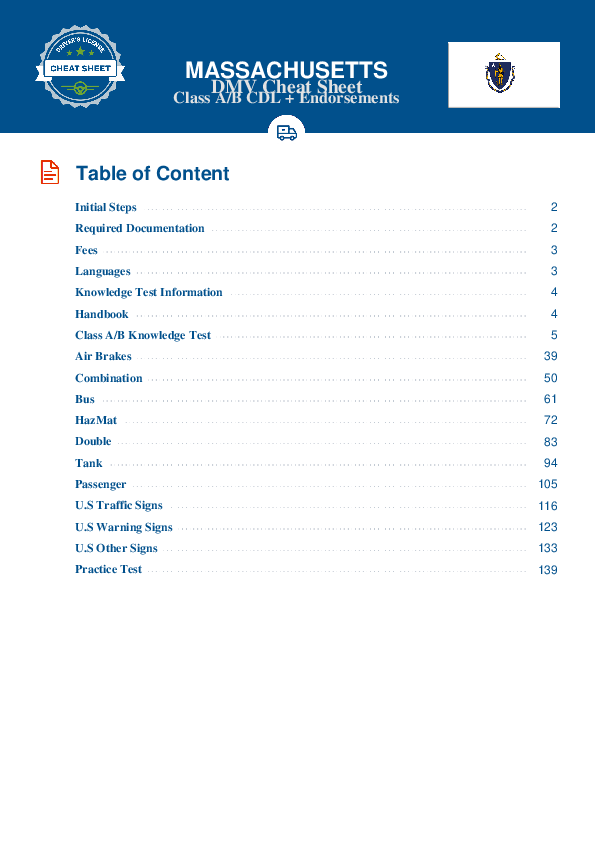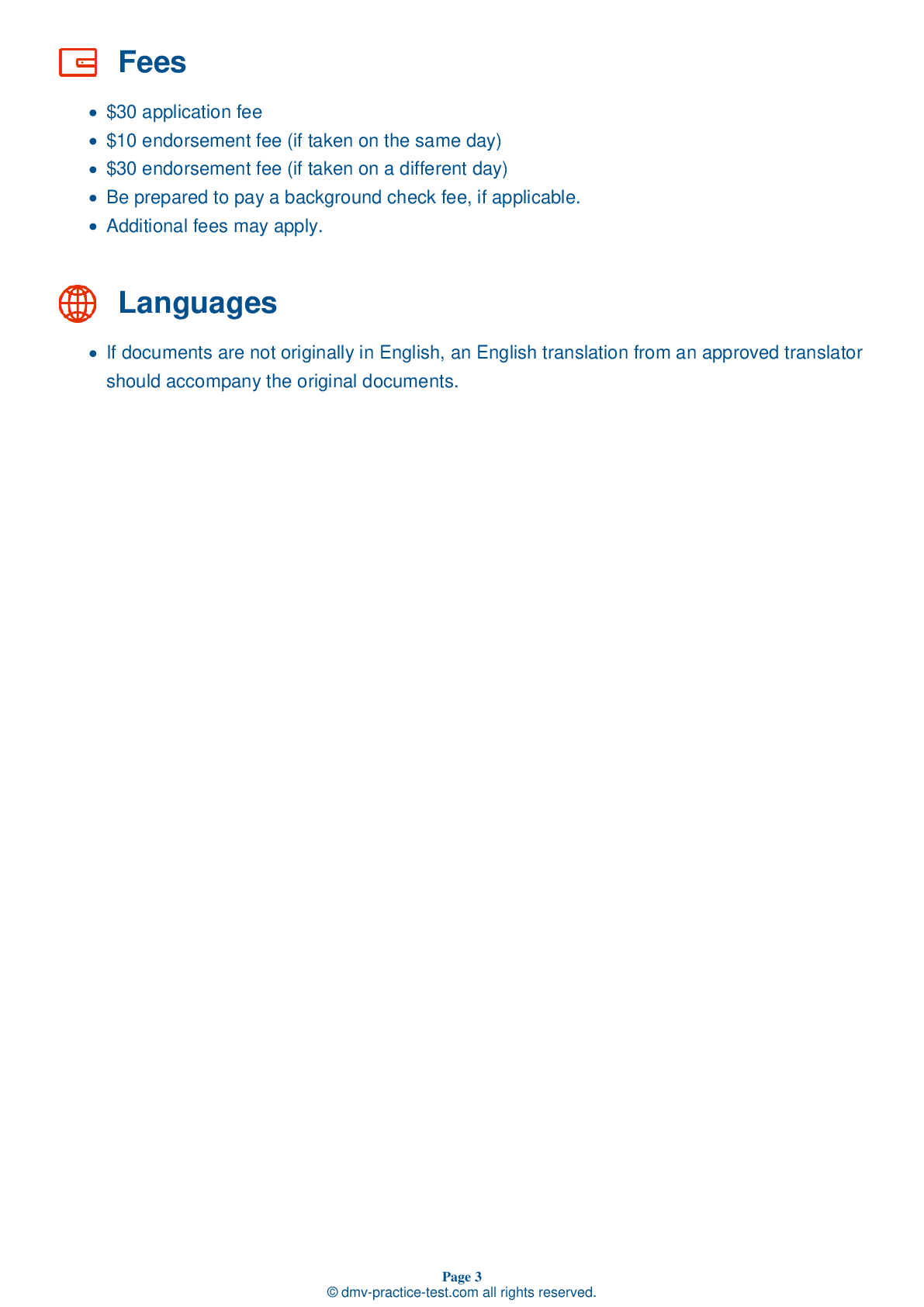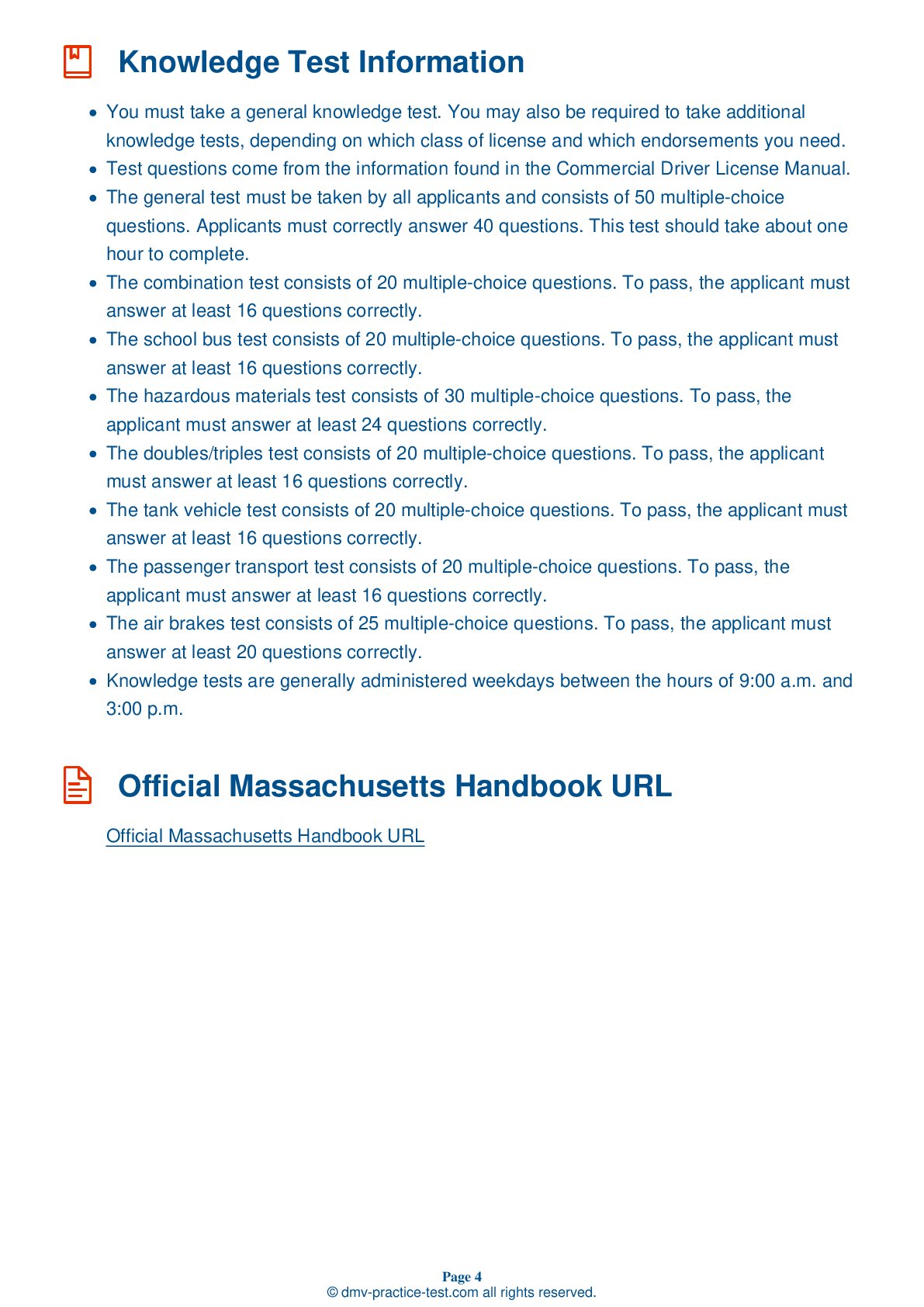Class B Driving Test | Massachusetts 2025 #2 Page 5 of 7
Train for FREE online with our Massachusetts class B license test. The official exam test consists of several obligatory parts, with all of them checking your knowledge of different blocks of road rules. If you need to obtain a MA CDL class B permit in 2025, practice as much as possible. Free sample tests published on our website will help you check and improve your knowledge and boost your grades. Please bear in mind that CDL class B requirements may vary from state to state.
29 . A vehicle’s center of gravity is:
To reduce the risk of a vehicle tipping over, it is very important to keep its center of gravity from becoming too high.
30 . If you are turning left where there are two available turning lanes:
If making a left turn where there is more than one available turn lane, you should always choose to take the rightmost lane. Large vehicles often have to swing right to make left turns, so it is safer for you to have other left-turning traffic to your left. This will allow you to have the best possible view of other turning vehicles and will lower the risk of your vehicle colliding with them.
31 . Tires of mismatched sizes:
Tires on the same vehicle should all be equally sized. Ensure your tires are not mismatched when inspecting your vehicle.
32 . Which of the following is not a good rule to follow when using turn signals?
To be certain that others are aware of your intentions, always signal whenever you plan to turn or change lanes. You should signal well in advance of a turn; signal continuously throughout the turn; and make sure to cancel the signal when you are finished turning.
33 . Slippery roadways usually:
It takes a longer distance to stop a vehicle on a slippery road than it does on a dry road. Use caution when driving under conditions that could cause a road surface to become slippery.
34 . Air tanks usually hold enough compressed air:
In an air braking system, the air storage tanks can usually hold enough compressed air for the brakes to be used several times.
35 . While driving, you should:
While driving, you should consistently check the road ahead for hazards. Develop a plan to deal with any hazards that could arise.
See the exact questions that will be on the 2025 Massachusetts DMV exam.
99.2% of people who use the cheat sheet pass the FIRST TIME
Lillian MCcranie explains how our CDL study guide was helpful in passing the exam and recommends it to everyone.
Cameron tells us how he purchased the CDL exam, and found it to be a useful tool which helped him pass the exam and find a job.



